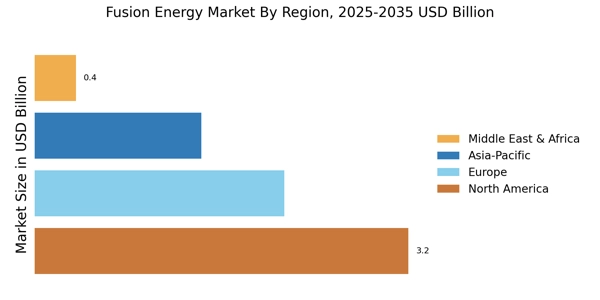Growing Demand for Clean Energy
The increasing demand for clean energy sources is a primary driver for the Fusion Energy Market. As concerns about climate change and environmental degradation intensify, nations are seeking sustainable alternatives to fossil fuels. Fusion energy, with its potential to provide vast amounts of energy without harmful emissions, appears to be a viable solution. According to recent estimates, the energy demand is projected to rise by 30% by 2040, further emphasizing the need for innovative energy solutions. The Fusion Energy Market is positioned to meet this demand, potentially transforming the energy landscape and contributing to global sustainability goals.
Government Support and Funding Initiatives
Government support plays a crucial role in the advancement of the Fusion Energy Market. Various countries are allocating substantial funding to research and development initiatives aimed at making fusion energy a practical reality. For instance, the United States has invested billions in fusion research, with initiatives like the ITER project in Europe receiving significant backing. This financial commitment not only accelerates technological advancements but also fosters collaboration among nations. The infusion of public funds into the Fusion Energy Market is likely to catalyze breakthroughs that could lead to commercially viable fusion energy solutions.
Technological Advancements in Fusion Research
Technological advancements are pivotal in shaping the Fusion Energy Market. Innovations in plasma physics, superconducting materials, and magnetic confinement techniques are enhancing the feasibility of fusion energy. Recent developments, such as improved confinement methods and advanced computational models, suggest that achieving sustained fusion reactions is becoming increasingly attainable. The market is witnessing a surge in investment in these technologies, with projections indicating that the fusion energy sector could reach a valuation of over 40 billion by 2030. These advancements not only promise to make fusion energy more efficient but also more accessible.
International Collaboration on Fusion Projects
International collaboration is emerging as a significant driver for the Fusion Energy Market. Projects like ITER exemplify how countries can pool resources and expertise to tackle the complex challenges of fusion energy. Such partnerships facilitate knowledge sharing and accelerate progress, as diverse teams work towards common goals. The collaborative nature of these initiatives is likely to enhance the overall efficiency of research and development efforts. As nations recognize the potential of fusion energy, the Fusion Energy Market is expected to benefit from increased cooperation, leading to faster advancements and a more robust energy future.
Public Awareness and Acceptance of Fusion Energy
Public awareness and acceptance of fusion energy are crucial for the growth of the Fusion Energy Market. As educational initiatives and outreach programs increase, more individuals are becoming informed about the benefits of fusion energy, including its safety and environmental advantages. This growing awareness is likely to translate into public support for fusion projects and funding initiatives. Surveys indicate that a significant portion of the population is open to supporting fusion energy development, which could influence policymakers to prioritize this clean energy source. The positive perception of fusion energy may ultimately drive investment and innovation within the Fusion Energy Market.


















Leave a Comment